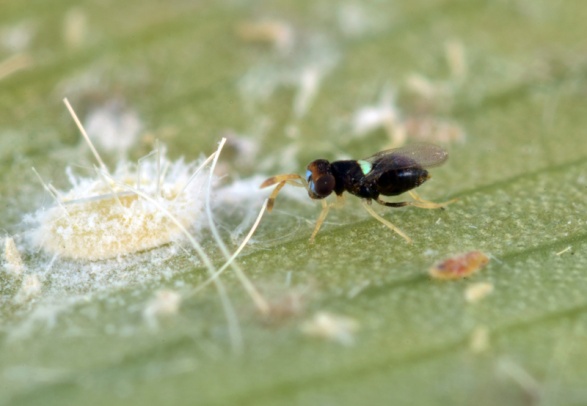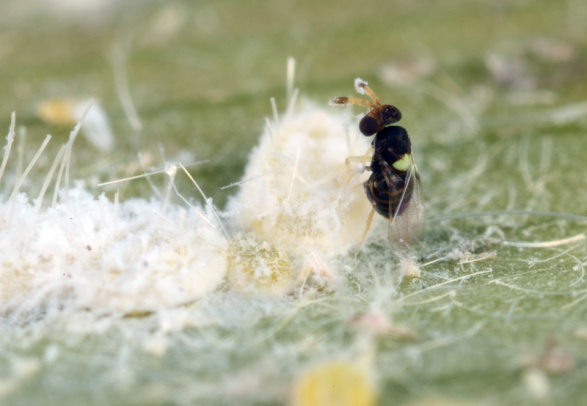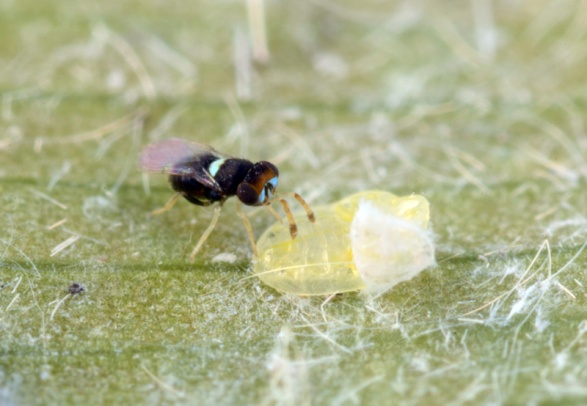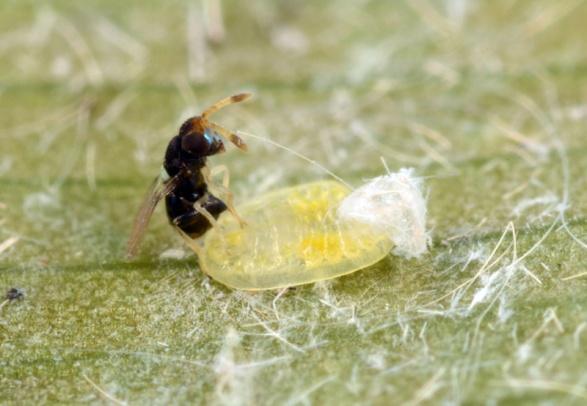
Encarsia noyesi (Hayat)
Encarsiella noyesi (Hayat)
(Insecta: Hymenoptera: Aphelinidae)
Encarsia noyesi is an endoparasitoid of giant whitefly, Aleurodicus dugesii Cockerell, and other whitefly pest species in the genera Aleurodicus and Aleurothrixus.
The minute adult wasps are 0.5 to 0.7 mm long. Females have dark brown bodies, light brown legs and antennae, and a violet-bluish face. The dorsal surface of the thorax has a distinct bluish-pearl white area.
Females lay eggs into third and fourth instars of the whitefly host. The eggs complete their development inside the host and emerge as adult wasps through an exit hole.
Native to the Republic of Trinidad and Tobago and to Mexico, Encarsia noyesi was introduced into California for control of citrus whitefly in 1997 and into Florida in 1998.
Images
To save the Web-optimized images shown below to your hard drive:
PC users: right click to "Save Picture (or Image) As..."
Mac users: click and drag to your desktop.

Adult female wasp of Encarsia noyesi (Hayat) approaching a fourth instar of giant whitefly, Dialeurodes citri
(Photograph copyright: Lyle Buss, University of Florida)

Adult female wasp of Encarsia noyesi (Hayat) examining a fourth instar of giant whitefly, Dialeurodes citri
(Photograph copyright: Lyle Buss, University of Florida)

Adult female wasp of Encarsia noyesi (Hayat) examining a nymph of giant whitefly, Dialeurodes citri, by antennal drumming
(Photograph copyright: Lyle Buss, University of Florida)

Adult female wasp of Encarsia noyesi (Hayat) ovipositing into a nymph of giant whitefly, Dialeurodes citri
(Photograph copyright: Lyle Buss, University of Florida)